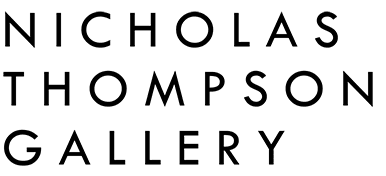JAMES DRINKWATER AND SUZANNE ARCHER IN TIARNEY MIEKUS’ REVIEW OF ‘AUSTRALIAN ABSTRACT’ IN ‘THE AGE’
As Australian Abstract attests, artistic genres and labels are as much a burden for artists as they are practical for the receiver. If you’re playing music, for example, you want to know if it’s country or hip-hop.
Yet within the vast category of abstract art, how an artist understands abstraction, and what lineage they’re working within, is decidedly singular. Amber Creswell Bell reveals this multiplicity by chronicling the lives and practices of 41 Australian artists working in abstraction today.
Starting with the question “What is abstract art?” Creswell Bell writes insightful, interview-led profiles on every artist, filled with biography, artistic beginnings, studio rituals and how each artist feels abstract art is received in Australia.
The more particular the writing, the more illuminating. For instance, when Bell chronicles Jo Davenport as a child painting magpies with her grandmother, and later witnessing the revelation of her high-school art teacher defending the Whitlam government’s 1973 purchase of Jackson Pollock’s Blue Poles. Or James Drinkwater watching his aunt paint at the kitchen table, or the slow rise of Helen Eager’s five-decade practice.
In what’s ultimately an image-led book with stunningly reproduced artworks that evoke viewing abstraction in the flesh, there are small glimpses into practices and artworks. Paul Higgs illustrating the physicality of paint, Celia Gullett’s fascination with colour, Stephen Ormandy’s compositions of block colour, Alice Wormald’s sci-fi layering of patterns and styles.
We learn how Antonia Perricone Mrljak didn’t start painting until the age of 38, and that Nathan Feldman, like many artists, treads the fine line of financial stability and an art practice.
Creswell Bell focuses on understanding what compels each artist, whether it’s their inner emotions, the formalism of colour and line, or apprehending the world in abstract ways, and lending this gaze to the reader.
This, however, rubs against the limits of language. Many artists in Australian Abstract struggle to elucidate their attraction to abstraction. It’s best summarised by Lottie Consalvo: “To make sense of it is to kill it.” Of course, this is the writer’s work – to reveal and interpret the unconscious marks of painters.
Yet something glaringly obvious stands out: despite the authoritative title Australian Abstract, the book conservatively equates abstract art with painting, disregarding a plethora of Australian innovators in video, sculpture and photography that would truly explain where abstract art is today.
Beyond a misleading title, there is the decision not to include any Indigenous artists. Creswell Bell explains, “I have consciously opted not to include Indigenous artists as it was my personal feeling that to include work so rich in historical and cultural significance of country is reductive at worst or tokenistic at best.” Bell doesn’t want to “assign a genre based on Western art idiolect”, briefly acknowledging that Indigenous art has been colonised and misread by the label “abstract”.
But for a book branding itself Australian Abstract, it’s now in the position of leaving out First Nations creators altogether, rather than rethinking this category, and delving into difficult conversations about art and colonialism, which seem pertinent today.
This is symptomatic of a lacking historical framework. While the book isn’t aiming to be historical, instead focusing on the “now”, the drawback is that there’s little cultural contextualisation that could prompt more delicate understandings.
Many artists also say that figurative art is preferred in Australia, with Helen Eager noting how, “Australia has a very narrative history and so abstraction has always been on the outside”. It may have been interesting to explore this history further, especially to better understand abstraction today when many included artists, such as Lauren O’Connor, Louise Gresswell and Emily Ferretti, among others, are calling for a less masculine, gentler abstraction that’s spiritual and nourishing — which seems to define many painters right now.
Instead, Creswell Bell has centred the artists’ process in what is an undeniably visually spectacular book. I will always defend such books as aesthetic objects in themselves, as something to communally peruse and a statement of one’s interests (although this later point can be co-opted as consumerist aestheticisation of our personalities). I became interested in art, as a child in Brisbane, because of books such as Australian Abstract. Bell clearly embraces the moral that “art is for anyone” and genuinely communicates this with care.
Today Australian arts publishing seems split between books such as Australian Abstract (this book is one of five by Creswell Bell exploring a certain aesthetic theme) and overly academic tomes, disregarding an in-between literary space. This is internationally filled by the conceptualised yet accessible writing of people such as Olivia Laing and Jennifer Higgie, who weave together interpretation, artistic practice and art history. Perhaps Australian publishers aren’t willing to take the risk.
